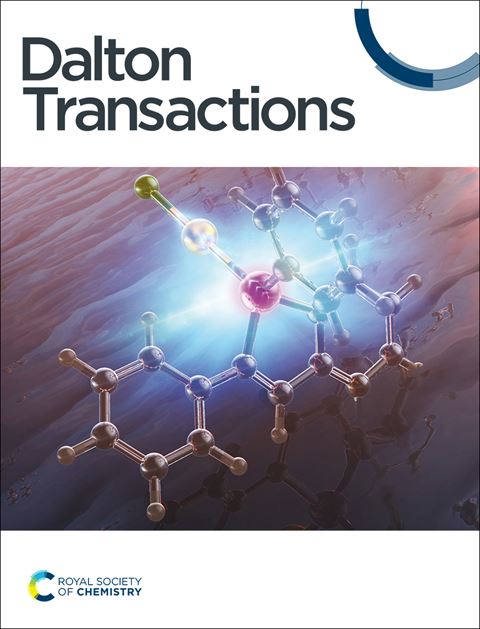(C5N2H7)IO2F2 and (C3N6H8)(IO2F2)2 : Two new organic-inorganic hybrid fluoroiodate birefringent crystals
IF 3.5
3区 化学
Q2 CHEMISTRY, INORGANIC & NUCLEAR
引用次数: 0
Abstract
Birefringent crystals are anisotropic material commonly used in modern optical devices to obtain polarized light. Traditional commercial birefringence crystals, such as, MgF2 and CaCO3, have the problems of small birefringence and not easy to grow. Herein, two organic-inorganic hybrid birefringence crystals composed of π-conjugated organic groups and lone pair-containing (IO2F2)- anions, namely, (C5N2H7)IO2F2 and (C3N6H8)(IO2F2)2, were successfully grown by a simple evaporation method. In their structures, the π-conjugated organic cations and (IO2F2)- anions are interconnected through hydrogen bonding and π-π stacking interactions into 3D supramolecular networks. Both of them exhibit large birefringence of 0.30 @ 550 nm and 0.23 @ 550 nm, superior to most of conventional birefringence materials. Moreover, UV-Vis-NIR diffuse reflectance spectra demonstrate that they have wide band gaps (4.06 eV and 4.10 eV) because of the presence of the F element with strong electronegativity. Theoretical analyses suggest that the parallel arrangement of the π conjugated cations resulted in large optical anisotropy. This work provides new promising candidates for UV birefringence materials.(C5N2H7)IO2F2和(C3N6H8)(IO2F2)2:两种新型有机-无机杂化氟碘酸盐双折射晶体
双折射晶体是现代光学器件中常用的获得偏振光的各向异性材料。传统的商用双折射晶体,如MgF2和CaCO3,存在双折射小,不易生长的问题。本文采用简单蒸发法制备了两个由π共轭有机基团和含孤对(IO2F2)-阴离子组成的有机-无机杂化双折射晶体(C5N2H7)IO2F2和(C3N6H8)(IO2F2)2。在其结构中,π共轭有机阳离子和(IO2F2)-阴离子通过氢键和π-π堆叠相互作用相互连接,形成三维超分子网络。两种材料均具有较大的双折射率,分别为0.30 @ 550 nm和0.23 @ 550 nm,优于大多数传统双折射率材料。紫外-可见-近红外漫反射光谱表明,由于存在电负性强的F元素,它们具有较宽的带隙(4.06 eV和4.10 eV)。理论分析表明,π共轭阳离子的平行排列导致了较大的光学各向异性。这项工作为紫外双折射材料提供了新的有前途的候选材料。
本文章由计算机程序翻译,如有差异,请以英文原文为准。
求助全文
约1分钟内获得全文
求助全文
来源期刊

Dalton Transactions
化学-无机化学与核化学
CiteScore
6.60
自引率
7.50%
发文量
1832
审稿时长
1.5 months
期刊介绍:
Dalton Transactions is a journal for all areas of inorganic chemistry, which encompasses the organometallic, bioinorganic and materials chemistry of the elements, with applications including synthesis, catalysis, energy conversion/storage, electrical devices and medicine. Dalton Transactions welcomes high-quality, original submissions in all of these areas and more, where the advancement of knowledge in inorganic chemistry is significant.
 求助内容:
求助内容: 应助结果提醒方式:
应助结果提醒方式:


